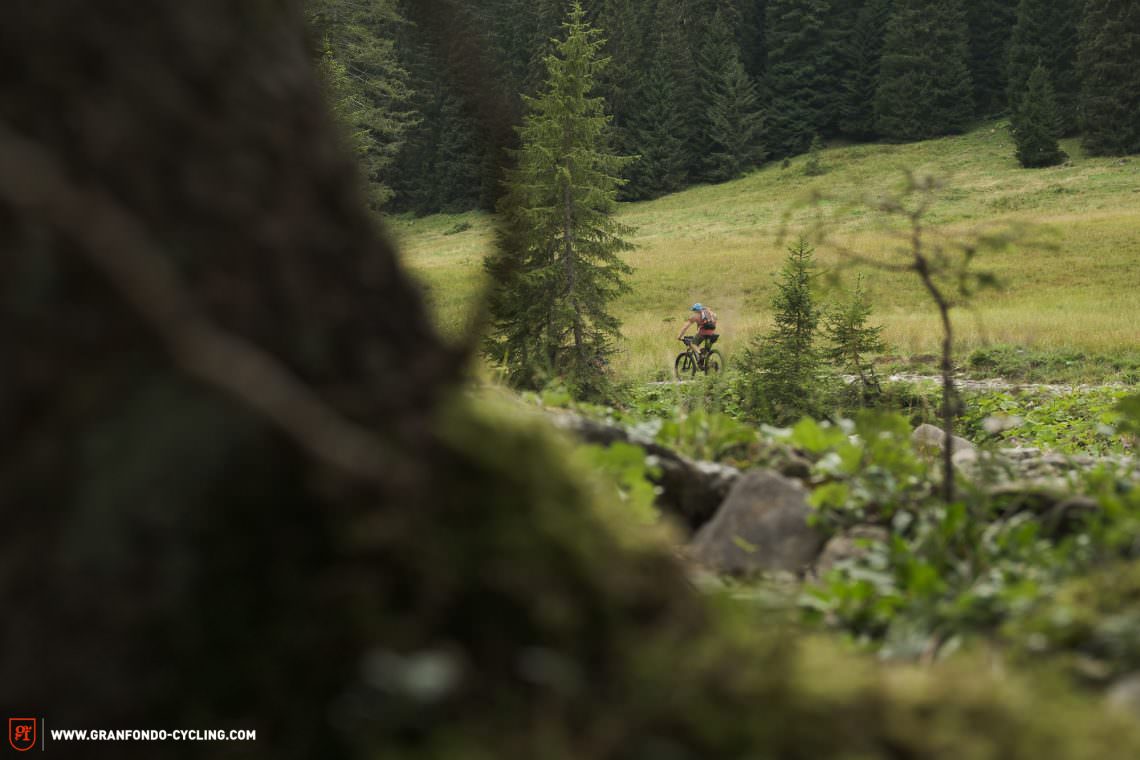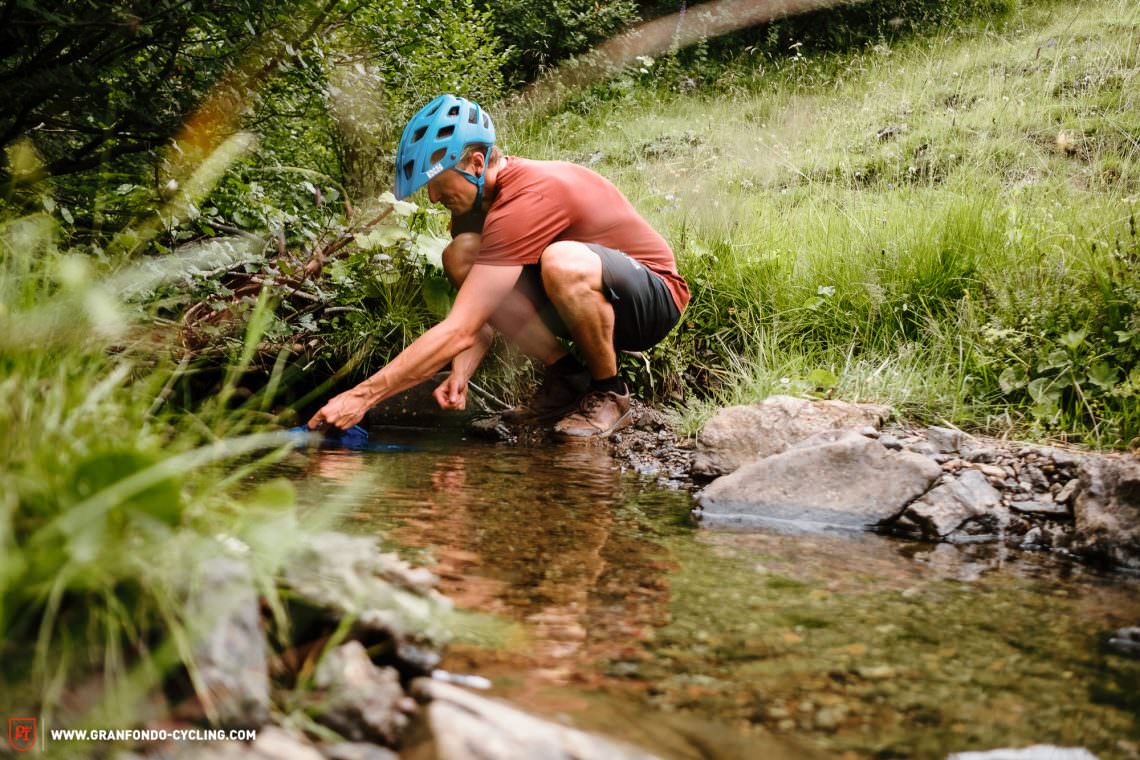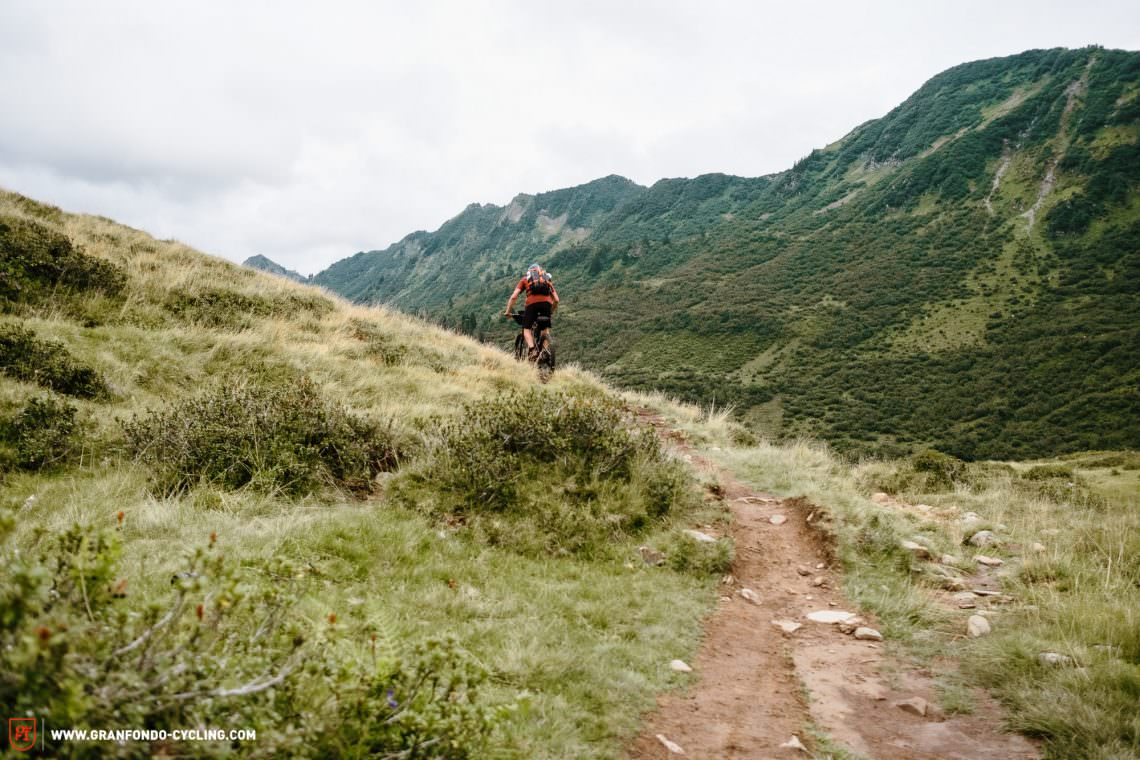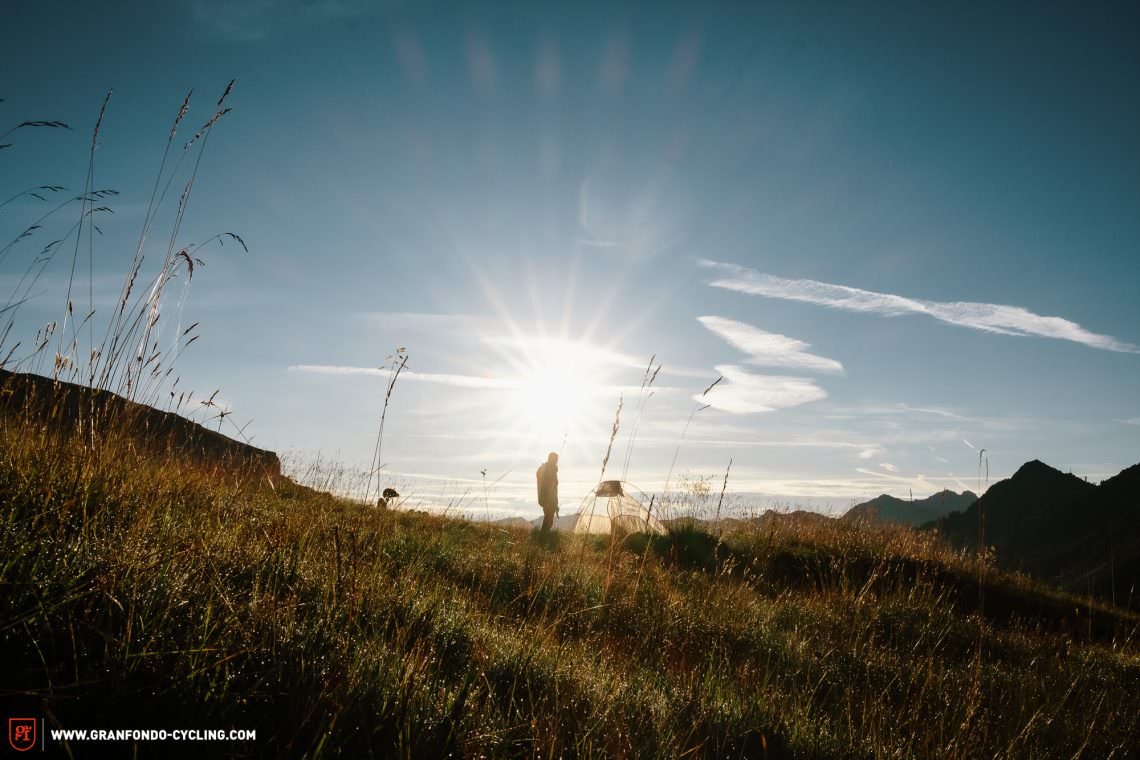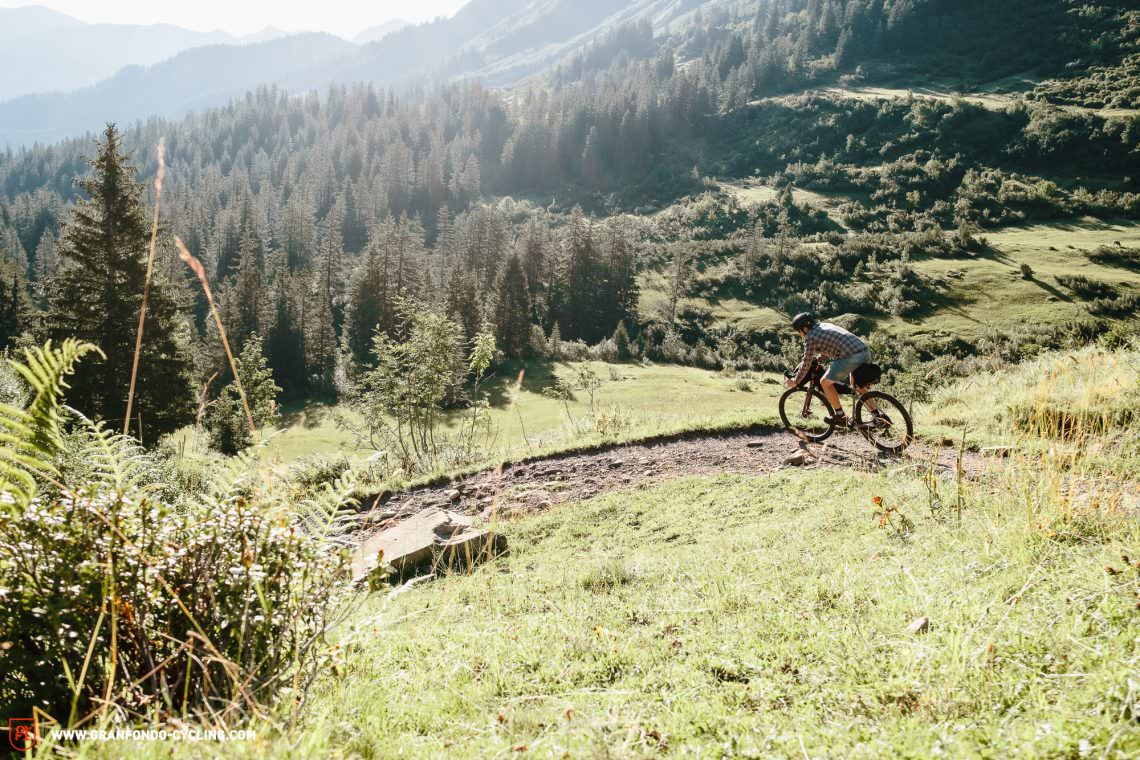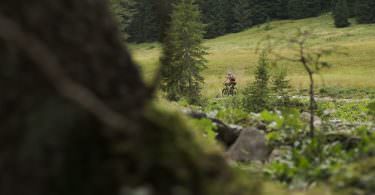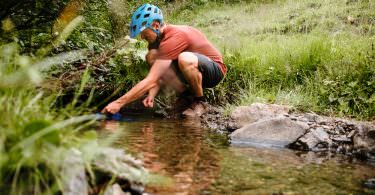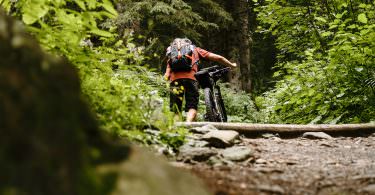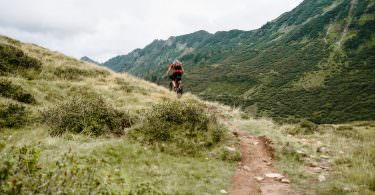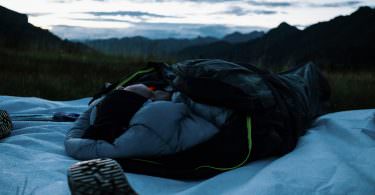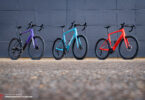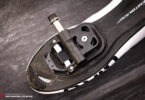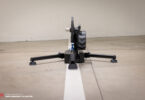The Trek Fuel EX 9.9 is an absolute classic in the trail bike segment. Could it also be the perfect bike for the next bikepacking adventure with its modern geometry and spare parts compartment in the down tube? We put the Fuel EX to the test.
For an overview of the test fleet head to the group test: The best bikepacking bike in review
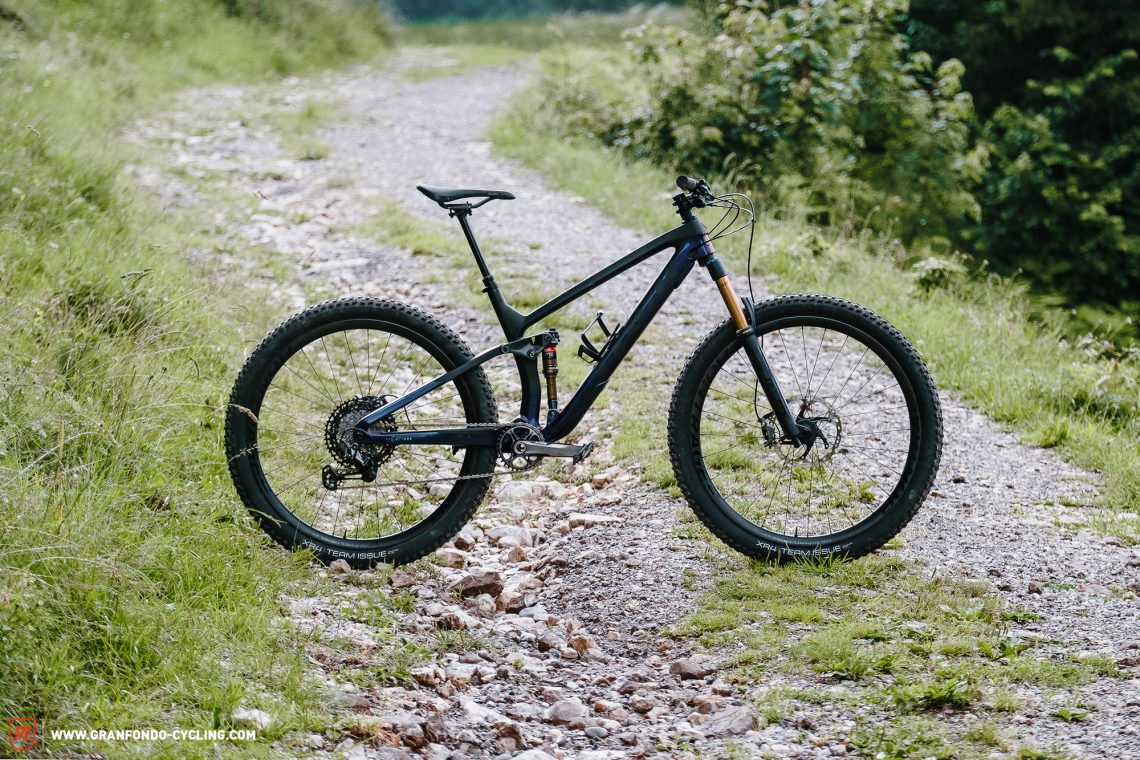
“What are the GRAN FONDO guys doing with a full suspension mountain bike?” It’s a relevant question. However, if you take a look at the bikepacking scene, you’ll see that full-suspension mountain bikes are quite widespread. As well as that, with two former downhill racers, Robin and Ben, on the test team, we wanted to see if they’ve still got the skills. 😉 Our sister magazine, ENDURO claims that the Trek Fuel EX 9.9 is well-suited to long-distance rides. Reason enough to put it to the test and have it represent full-sussers in our gravel bike group test. You want to know everything about bikepacking and bikes, gear, route planning and accommodation? Click here for our detailed Bikepacking 101.
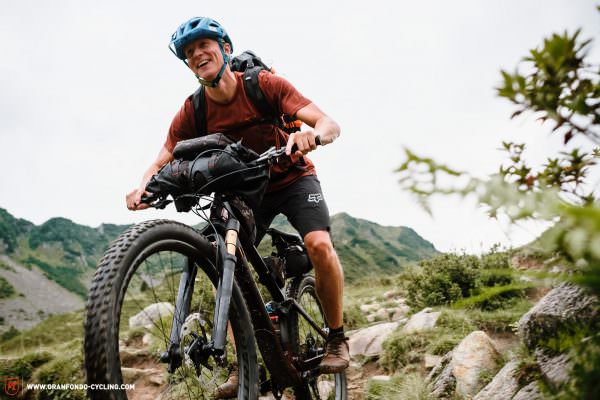
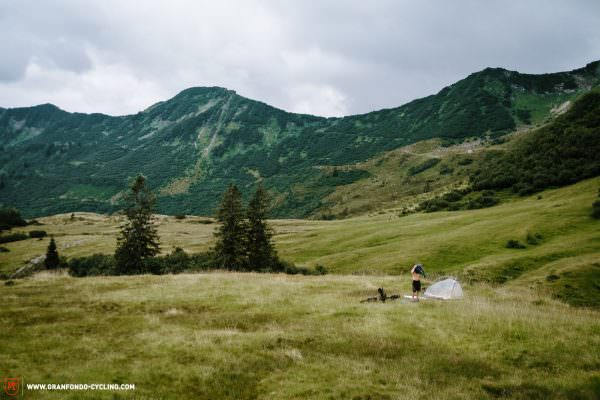
In addition to a wide range of custom paint jobs, Trek have specced the Fuel EX with a 29″ Bontrager Line Pro 30 OCLV Mountain carbon wheelset and it offers 140 mm travel up front and 130 mm at the rear. The former is controlled by a FOX 36 Factory GRIP2 fork and the latter by a specially developed RockShox Deluxe RT3 shock with RE:aktiv damping and Thru Shaft technology. The Thru Shaft technology allows the piston rod to move through the body of the shock when compressed, instead of displacing oil into an IFP (internal floating piston) reservoir. By negating the additional seals of an IFP, there should be less internal friction, allowing the shock to respond more sensitively and react to impacts quicker. The remaining components of the € 8,899 Project One bike leave almost nothing to be desired: A 1×12 Shimano XTR M9100 groupset including XTR M9120 four-piston brakes and a high-quality cockpit consisting of 50 mm Bontrager Line Pro 35 stem and 800 mm wide Bontrager Line Pro carbon handlebar. In size L, the Trek weighs 13.18 kg and while it’s the heaviest in the test field, it’s only 1.73 kg heavier than the RONDO. The weight difference seems almost ridiculous when you consider how much more capable the Trek is off-road.
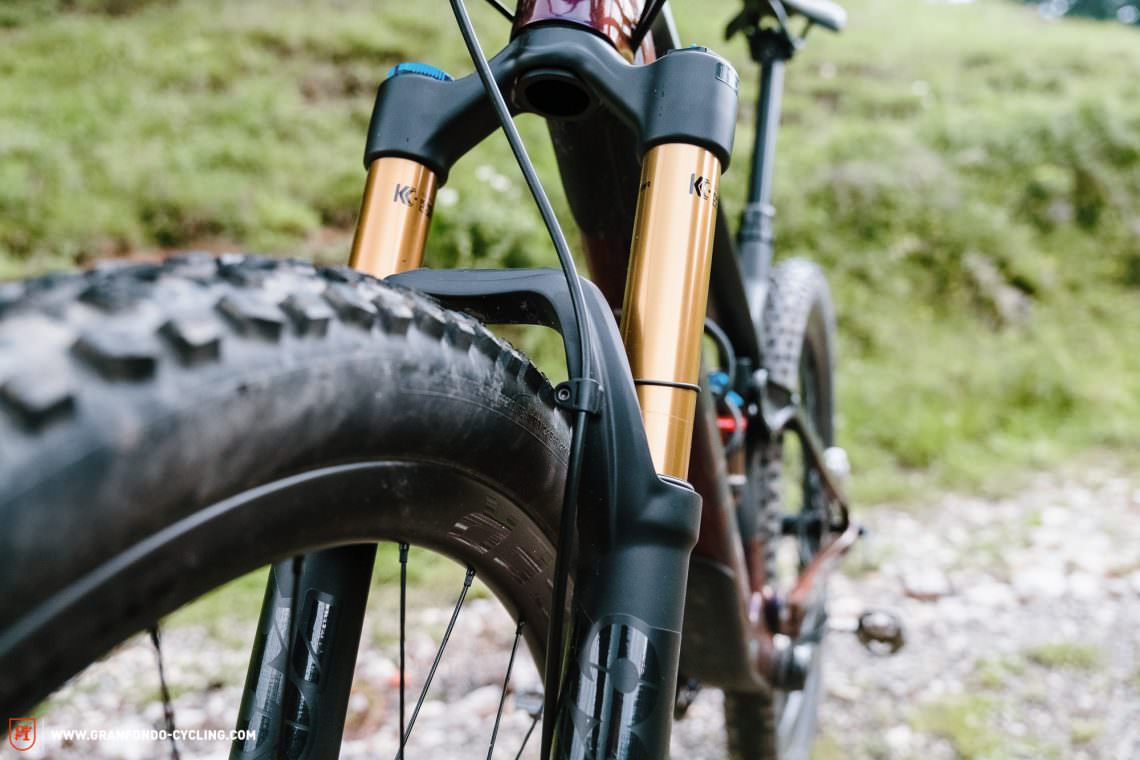
The FOX suspension makes the Trek hard to beat in terms of having fun on the descents
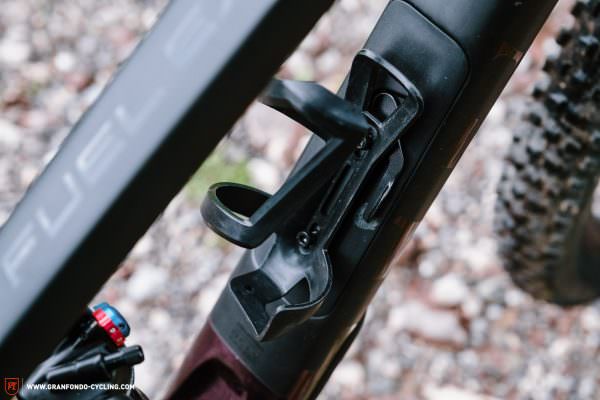
The shock for the rear suspension makes the Trek’s small front triangle even smaller. Most full suspension bikes are incompatible with reasonably sized frame bags. At least there’s storage space for a few small things under the bottle cage.
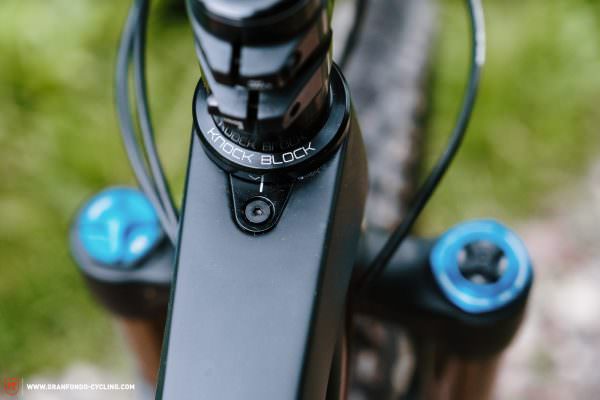
With the Knock Block headset, the Trek’s steering is limited. That way the fork crown or brake/gear lever can’t damage the frame in the event of a crash.
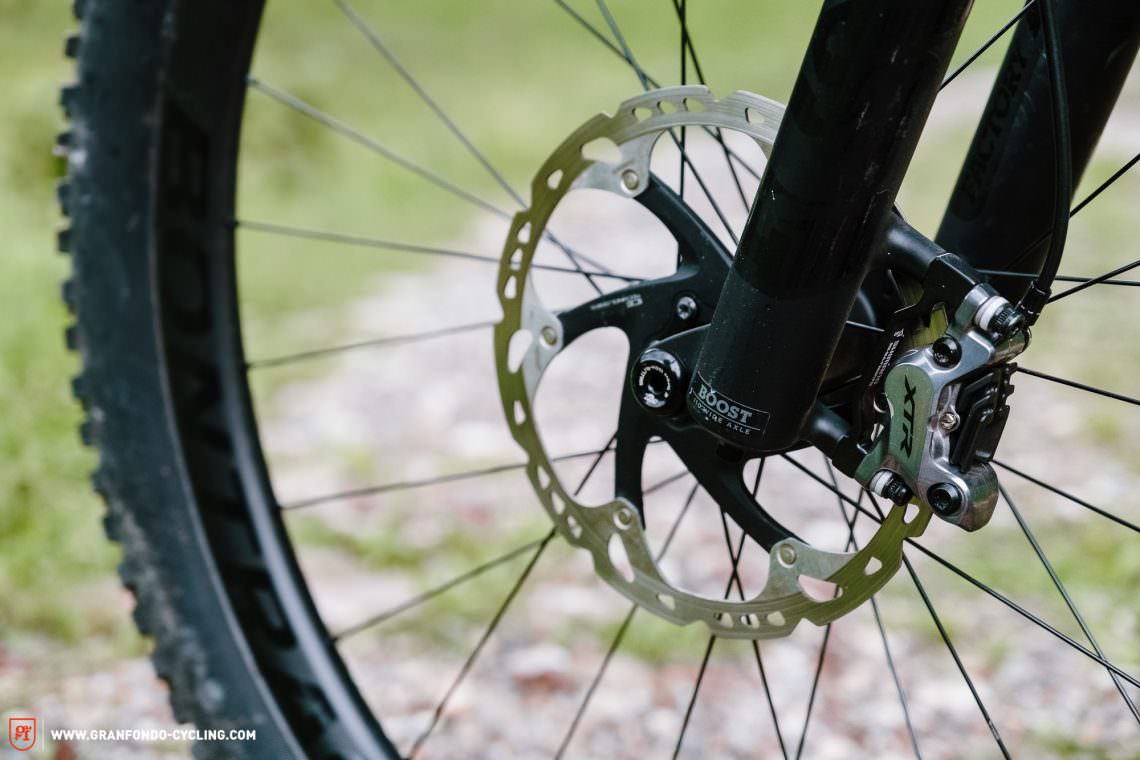
The braking performance of Shimano’s four-piston XTR brakes is beyond comparison with the others in the test field. Thanks to the grippy tires, you’ll safely come to a halt even on the most demanding terrain.
Trek Fuel EX 9.9 XTR Project One
€ 8,899
Specifications
Seatpost Bontrager Line Elite
Brakes Shimano XTR BR/BL M9120 203/180 mm
Drivetrain Shimano XTR 32 (10–51)
Stem Bontrager Line Pro 35 50 mm
Handlebar Bontrager Line Pro, OCLV Carbon 800 mm
Wheelset Bontrager Line Pro 30, OCLV Mountain Carbon
Tires Bontrager XR4 Team Issue 66C
Technical Data
Size XS S M L XL
Weight 13.18 kg
Wheelsize 700C
Specific Features
full-suspension
storage box in the down tube
customisable Projekt One paint job
adjustable geometry

Moab Handlebar Bag (13 l, $ 160) | Black Dragon Dropper Seat Bag (5–7 l, $ 175 )
Dakota Tank Bag (ca. 1 l, $ 70) und Kayenta Rear Tank Bag (ca. 0.5 l, $ 70)
Rucksack
ORTLIEB Atrack BP (25 l, € 179.99)
| Size | XS | S | M | L | XL |
|---|---|---|---|---|---|
| Seat tube | 356 mm | 395 mm | 420 mm | 450 mm | 500 mm |
| Top tube | 546 mm | 567 mm | 603 mm | 634 mm | 663 mm |
| Head tube | 90 mm | 100 mm | 100 mm | 105 mm | 120 mm |
| Head angle | 66.0° | 66.0° | 66.0° | 66.0° | 66.0° |
| Seat angle | 67.5° | 67.5° | 67.5° | 67.5° | 67.5° |
| BB Drop | 34 mm | 34 mm | 34 mm | 34 mm | 34 mm |
| Chainstay | 437 mm | 437 mm | 437 mm | 437 mm | 437 mm |
| Wheelbase | 1,120 mm | 1,144 mm | 1,179 mm | 1,211 mm | 1,242 mm |
| Reach | 395 mm | 415 mm | 440 mm | 470 mm | 495 mm |
| Stack | 563 mm | 572 mm | 609 mm | 613 mm | 627 mm |
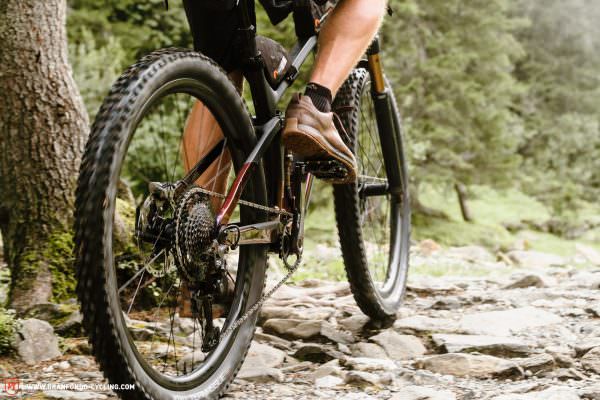
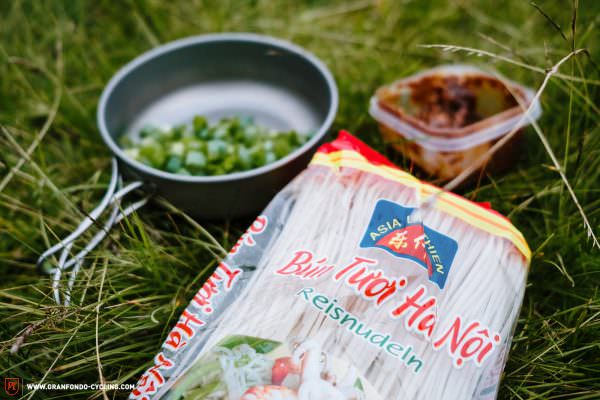
With the Trek, bikepacking finds its way back to its roots. Literally and figuratively!

Due to the 75° seat tube angle, which is moderate for a bike in its class, the riding position on the Trek is slightly stretched and not unfamiliar. The front end is low for a trail bike too, which adds to the bike’s familiar feeling compared to a gravel bike. Of course, the Trek doesn’t stand a chance against the test field when it comes to acceleration and speed. However, with the bike’s relatively firm suspension, you’ll be surprised how small of a compromise you have to accept when climbing! On very steep climbs, the Trek will even keep up with the test field. This is thanks to the bike’s high level of traction and the wide gear range of the XTR drivetrain. On single-digit inclines, the bikes with drop bars will soon pull away.
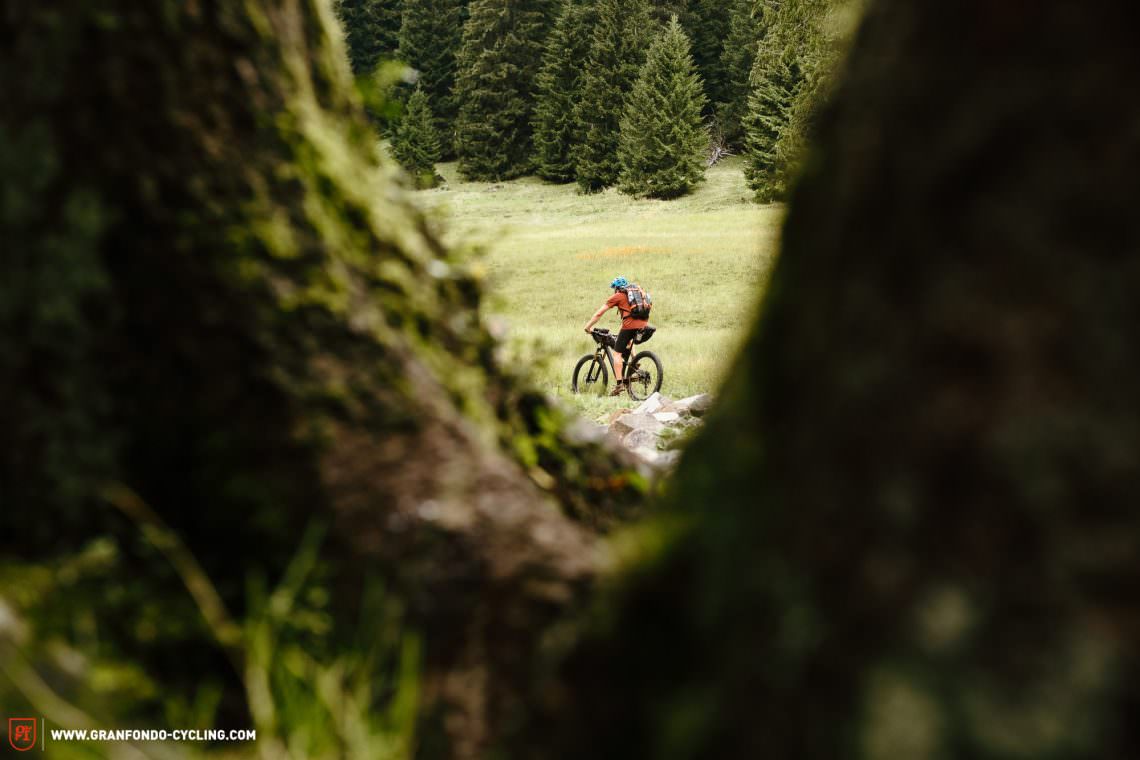
However, with a full-suspension bike, you’ll be able to catch up on the descents. Regardless of whether it’s a gravel road, moderate singletrack or challenging terrain, the Trek’s comfort, composure and descending capabilities are unmatched in the test field. Your position on the bike is centred and the handling is super intuitive. As such, the Trek makes easy work of navigating tight corners. Once you’ve gotten used to the 800 mm wide handlebar, or shortened it accordingly, direction changes are lightning quick and the bike begs you to manual or bunny hop off rollers and ledges. The storage compartment in the down tube offers enough space for CO2 cartridges, tools and spare tubes. Apart from that, the small front triangle hardly offers any storage space and the complete lack of mounting points on the frame and fork make carrying a backpack a necessary evil. Due to the dropper seat post, you’ll also be significantly restricted in your choice of saddlebag.
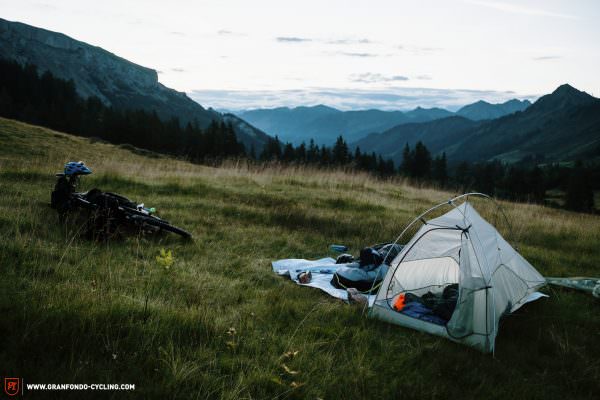

Tuning tips: chainstay protector
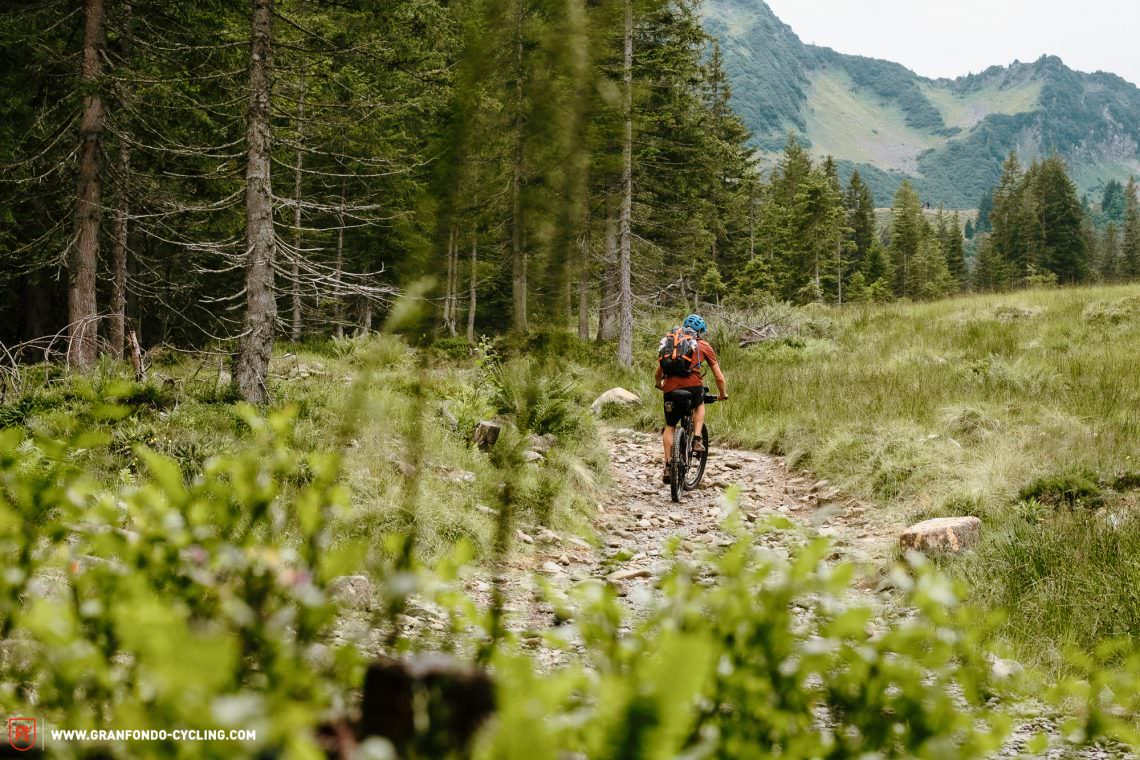
Conclusion
The Trek Fuel EX 9.9 XTR Project One convinced us with its intuitive and good-natured handling. It’s very playful on the descents, spoils its rider with comfort regardless of the terrain and you’ll never find yourself lacking in confidence. If you live and ride in alpine terrain and you’re not bothered by carrying a backpack, a full suspension bike like the Trek is a viable alternative. If you want to cover longer distances on moderate terrain and on the road, you’ll find significantly more versatile options.
Tops
- maximum fun on the descents
- intuitive and good-natured handling
- storage compartment in the down tube for tools or snacks
Flops
- too sluggish on easy terrain
- too much bike for long straights
- chain slap
For more info head to trekbikes.com.
The test field
For an overview of the test fleet head to the group test: The best bikepacking bike in review
All bikes in test: Bombtrack Hook 2 (Click for review) | Canyon Grail AL 7.0 SL (Click for review) | Fern Chuck Explorer (Click for review) | Marin Headlands 2 (Click for review) | Mason Bokeh GRX (Click for review) | MERIDA SILEX+ 8000-E (Click for review) | RONDO BOGAN (Click for review) | ROSE BACKROAD AXS Mullet Build (Click for review) | Salsa Cutthroat GRX 600 (Click for review) | Specialized Diverge Comp Carbon (Click for review) | Specialized S-Works Epic HT AXS Custom (Click for review) | Trek Fuel EX 9.9 XTR Project One
Did you enjoy this article? If so, we would be stoked if you decide to support us with a monthly contribution. By becoming a supporter of GRAN FONDO, you will help secure a sustainable future for high-quality cycling journalism. Click here to learn more.
Words: Photos: Benjamin Topf, Robin Schmitt, Valentin Rühl


